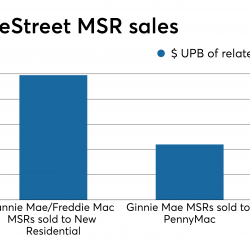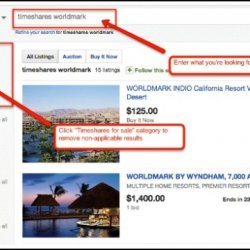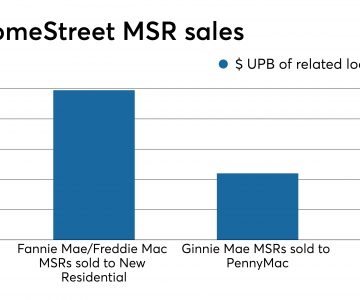the 6minute rule for how is freddie mac being hels responsible for underwater mortgages

The Financial Crisis Questions Commission discovered that in 2008, GSE loans had a delinquency rate of 6. 2 percent, due to their traditional underwriting and certification requirements, compared to 28. 3 percent for non-GSE or private label loans, which do not have these requirements. Additionally, it is not likely that the GSEs' enduring inexpensive real estate objectives motivated lending institutions to increase subprime lending.
The objectives came from the Housing and Neighborhood Advancement Act of 1992, which passed with overwhelming bipartisan support. In spite of the fairly broad mandate of the inexpensive housing objectives, there is little evidence that directing credit towards customers from underserved neighborhoods caused the housing crisis. The program did not considerably change broad patterns of home loan financing in underserviced neighborhoods, and it functioned quite well for more than a years before the personal market started to heavily market riskier mortgage products.
As Wall Street's share of the securitization market grew in the mid-2000s, Fannie Mae and Freddie Mac's earnings dropped substantially. Figured out to keep investors from panicking, they filled their own investment portfolios with risky mortgage-backed securities acquired from Wall Street, which produced greater returns for their shareholders. In the years preceding the crisis, they likewise started to lower credit quality requirements for the loans they bought and guaranteed, as they tried to contend for market share with other private market participants.
These loans were normally come from with large down payments however with vacation timeshare rentals little documents. While these Alt-A mortgages represented a little share of GSE-backed mortgagesabout 12 percentthey were accountable for between 40 percent and half of GSE credit losses throughout 2008 and 2009. These errors integrated to drive the GSEs to near personal bankruptcy and landed them in conservatorship, where they remain todaynearly a years later on.
And, as described above, in general, GSE backed loans performed much better than non-GSE loans throughout the crisis. The Community Reinvestment Act, or CRA, is created to resolve the long history of prejudiced financing and encourage banks to help fulfill the requirements of all borrowers in all segments of their neighborhoods, especially low- and moderate-income populations.
The Of How Many Mortgages Are Backed By The Us Government
The main idea of the CRA is to incentivize and support feasible personal loaning to underserved communities in order to promote homeownership and other community investments – the big short who took out mortgages. The law has been amended a variety of times since its preliminary passage and has become a cornerstone of federal community development policy. The CRA has helped with more than $1.
Conservative critics have actually argued that the requirement to satisfy CRA requirements pushed lending institutions to loosen their lending standards leading up to the housing crisis, successfully incentivizing the extension of credit to undeserved customers and sustaining an unsustainable housing bubble. Yet, the evidence does not support this narrative. From 2004 to 2007, banks covered by the CRA stemmed less than 36 percent of all subprime home mortgages, as nonbank lenders were doing most subprime loaning.
In overall, the Financial Crisis Inquiry Commission determined that simply 6 percent of high-cost loans, a proxy for subprime loans to low-income borrowers, had any connection with the CRA at all, far below a threshold that would indicate considerable causation in the housing crisis. This is due to the fact that non-CRA, nonbank loan providers were often the offenders in a few of the most harmful subprime financing in the lead-up to the crisis.
This remains in keeping with the act's fairly restricted scope and its core function of promoting access to credit for certifying, generally underserved borrowers. Gutting or getting rid of the CRA for its expected role in the crisis would not just pursue the incorrect target but likewise held up efforts to reduce inequitable home mortgage financing.
Federal housing policy promoting price, liquidity, and gain access to is not some ill-advised experiment but rather an action to market failures that shattered the housing market in the 1930s, and it has actually sustained high rates of homeownership since. With federal assistance, read more far greater numbers of Americans have taken pleasure in the benefits of homeownership than did under the free market environment before the Great Anxiety.
Not known Incorrect Statements About How Is The Compounding Period On Most Mortgages Calculated
Rather than focusing on the danger of government support for mortgage markets, policymakers would be better served examining what most experts have actually identified were reasons for the crisispredatory loaning and bad policy of the monetary sector. Putting the blame on housing policy does not speak with the realities and risks turning back the clock to a time when most Americans might not even imagine owning a home.
Sarah Edelman is the Director of Real Estate Policy at the Center. The authors want to thank Julia Gordon and Barry Zigas for their useful remarks. Any mistakes in this brief are the sole responsibility of the authors.
by Yuliya Demyanyk and Kent Cherny in Federal Reserve Bank of Cleveland Economic Trends, August 2009 As rising home foreclosures and delinquencies continue to weaken a financial and financial healing, an increasing quantity of attention is being paid to another corner of the property market: industrial property. This short article discusses bank exposure to the commercial realty market.
Gramlich in Federal Reserve Bank of Kansas City Economic Review, September 2007 Booms and busts have played a popular function in American financial history. In the 19th century, the United States gained from the canal boom, the railroad boom, the minerals boom, and a monetary boom. The 20th century brought another financial boom, a postwar boom, and a dot-com boom (which banks are best for poor credit mortgages).
by Jan Kregel in Levy Economics Institute Working Paper, April 2008 The paper offers a background to the forces that have produced today system of residential housing financing, the reasons for the current crisis in home loan funding, and the impact of the crisis on the overall monetary system (how common are principal only additional payments mortgages). by Atif R.
Not known Details About Mortgages What Will That House Cost
The recent sharp increase in mortgage defaults is significantly enhanced in subprime zip codes, or zip codes with a disproportionately large share of subprime customers as . what act loaned money to refinance mortgages… by Yuliya Demyanyk in Federal Reserve Bank of St. Louis Regional Economist, October 2008 One might anticipate to find a connection in between customers' FICO scores and the incidence of default and foreclosure throughout the current crisis.

by Geetesh Bhardwaj and Rajdeep Sengupta in Federal Reserve Bank of St – what is the best rate for mortgages. Louis Working Paper, October 2008 This paper demonstrates that the reason for widespread default of home loans in the subprime market was an unexpected turnaround in your home price appreciation of the early 2000's. Utilizing loan-level data on subprime mortgages, we observe that the bulk of subprime loans were hybrid adjustable rate home loans, developed to enforce significant monetary …

Kocherlakota in Federal Reserve Bank of Minneapolis, April 2010 Speech before the Minnesota Chamber of Commerce by Souphala Chomsisengphet and Anthony Pennington-Cross in Federal Reserve Bank of St. Louis Evaluation, January 2006 This paper explains subprime loaning in the mortgage market and how it has actually progressed through time. http://josuequnw343.bearsfanteamshop.com/more-about-how-many-va-mortgages-can-you-have Subprime loaning has actually presented a significant amount of risk-based pricing into the home loan market by producing a myriad of prices and item options mainly identified by customer credit history (mortgage and rental payments, foreclosures and bankru …






Ingen kommentarer endnu